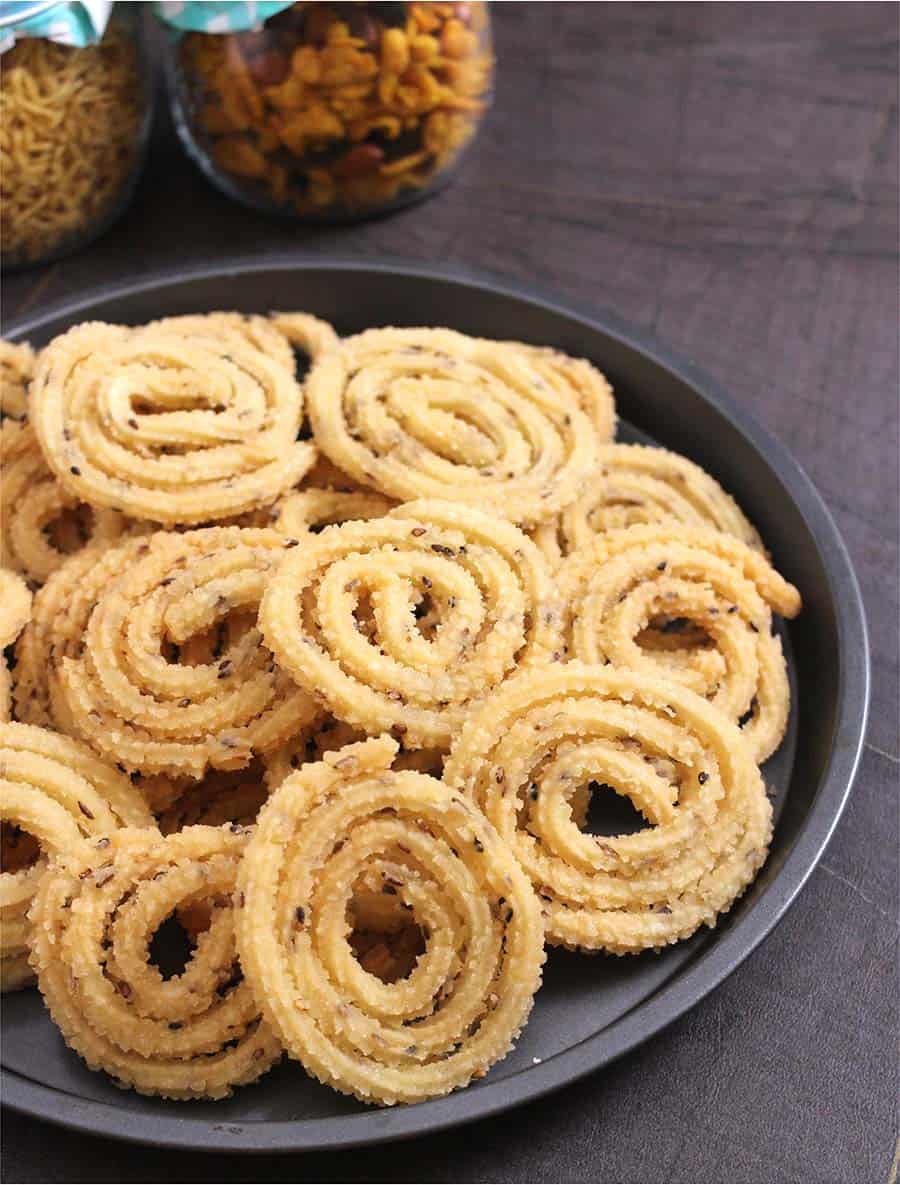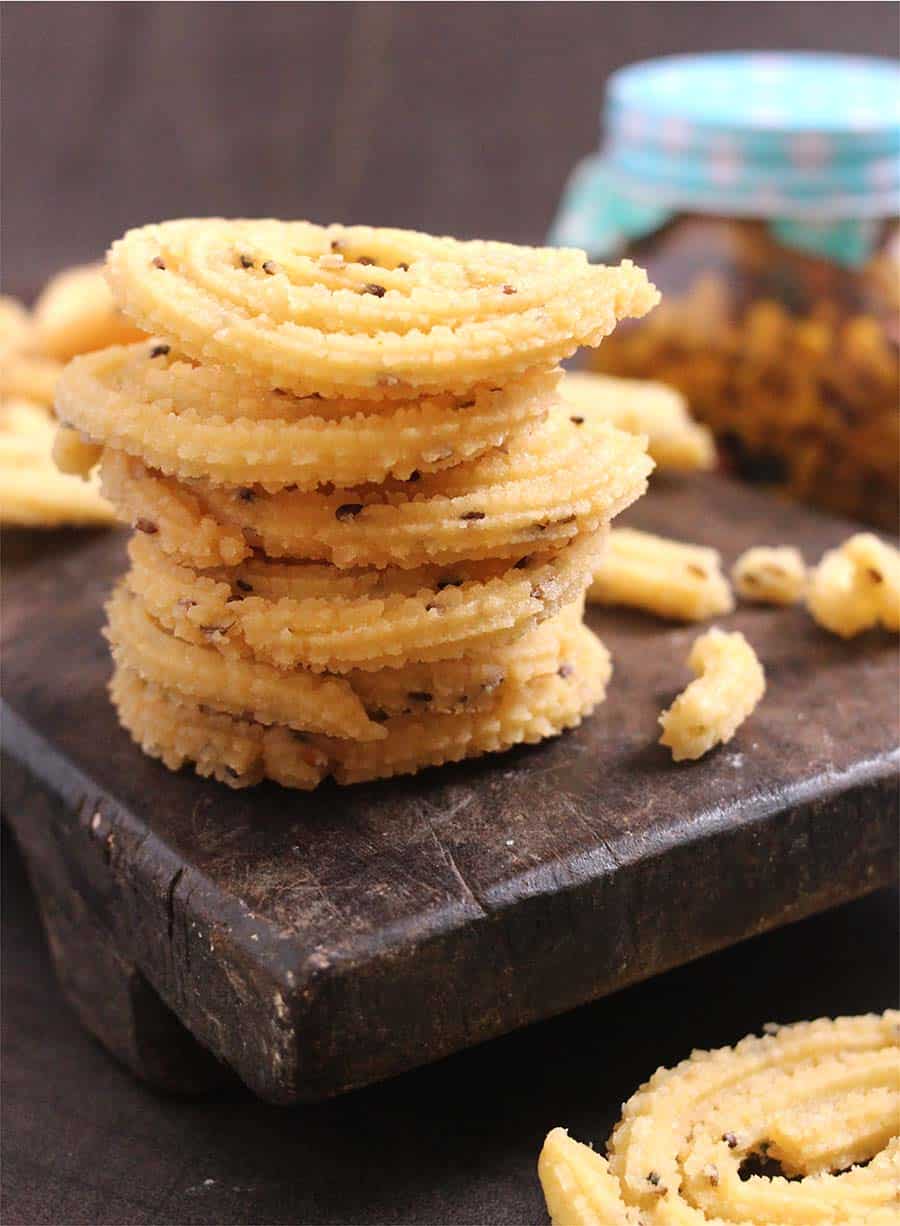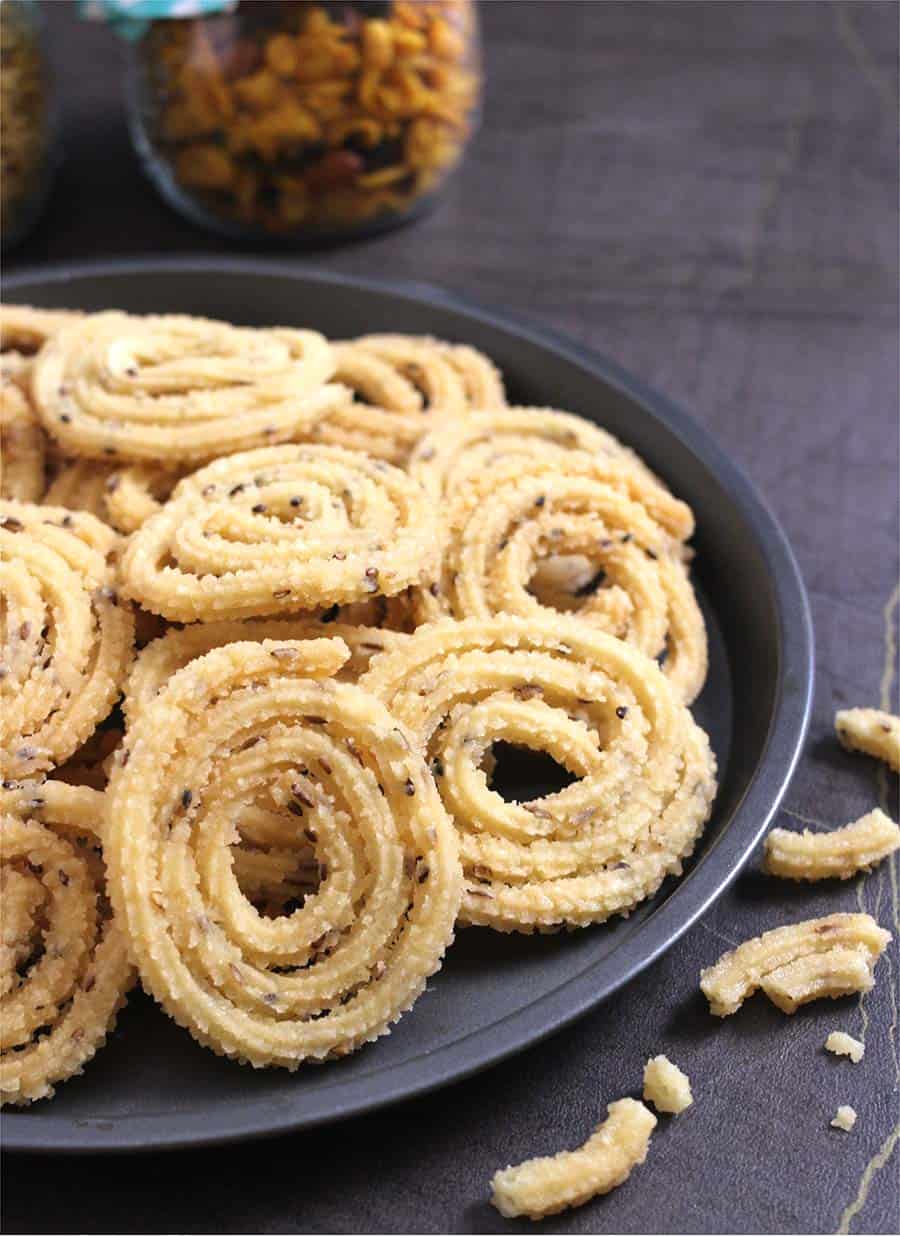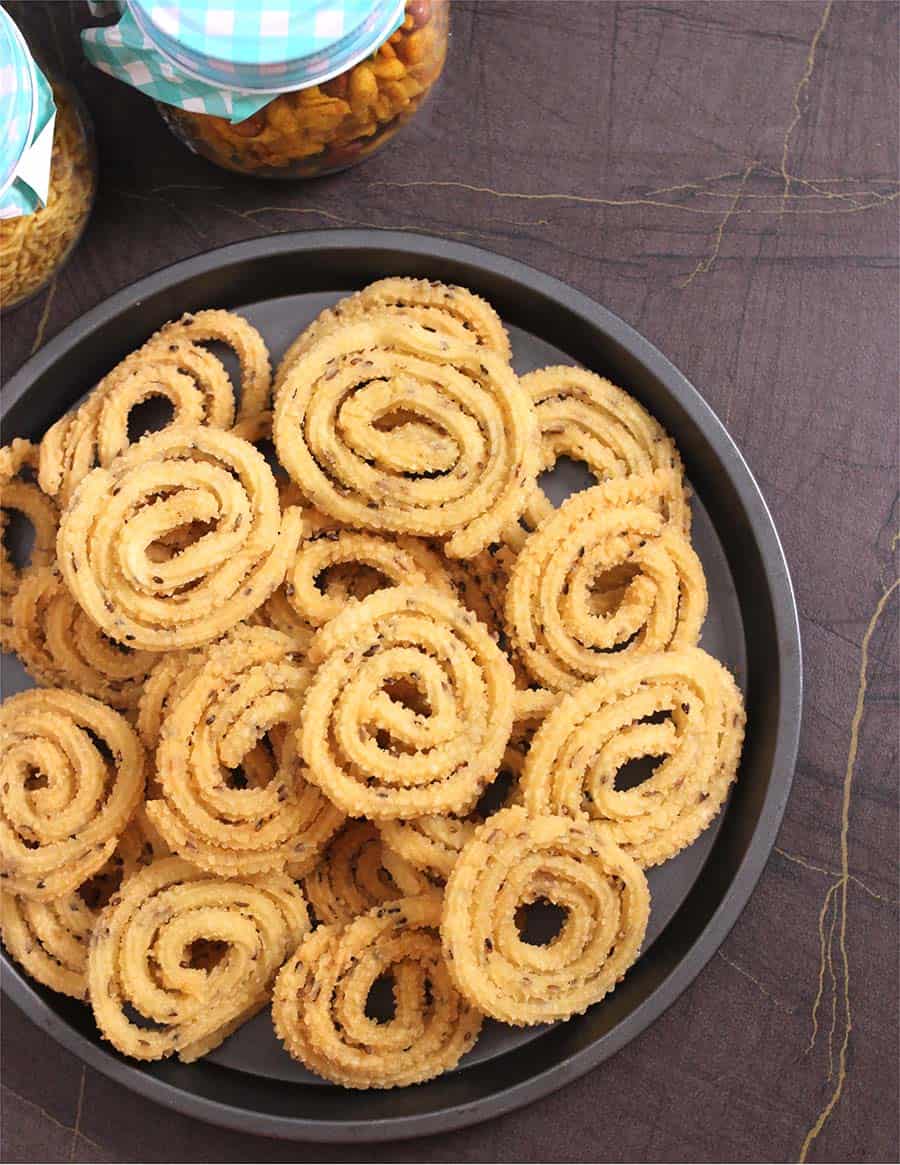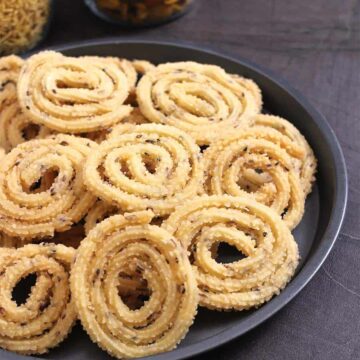These savory treats are the best accompaniment for evening tea or coffee during festivals like Diwali, Navratri, etc. I love munching these snacks throughout the day.
This post contains affiliate links, which means I will earn a commission if you click through and buy something, at no additional cost to you! Sama, Samak, or Samvat is a millet used primarily during fasting or vart days like Navratri, Sankashti, Ekadashi, Ganesh Chaturthi, or Karwa Chauth since rice or any cereal grains are not consumed on these days. Thus it is commonly called vrat ke chawal in India. Some other names are barnyard millet, shamula, sama, shama, shamul, kudirai valu, bonta chamulu, vara, varai, sanwa, samwa, swany, warai, oodalu, mordhan and maraiyo (Did I miss any? do comment below :-)) Samo Rice Chakli is also popular by following names
I wanted to post chakli recipe during Ganesh Chaturthi, but because I had misplaced my chakli mold during shifting, I ended up doing NIPPATTU using the same dough. With my new chakli mold, which you can see in the video here, I was excited to prepare different chakuli varieties. I have already tried instant garlic chakli, tomato chakli, etc., for quick evening snacks, and I will soon share the recipe. But because it is Navratri and most of my readers have asked for more fasting recipes, I decided to share chakli made using vrat ke chawal (samo rice) first. 2 cups Samo Rice (Barnyard Millet or Varai) 1 teaspoon Cumin seeds 1 teaspoon Til or Sesame seeds 1 tablespoon Oil ½ teaspoon Salt or sendha namak (adjust to taste) Oil for frying
How to make Crispy Samo Rice Chakli - Vrat or Farali Chakli
Wash and soak samo rice in water for 2 hours. Drain water as much as possible. Add the drained samo rice to the mixer or blender and blend it to a thick, smooth paste. While blending, add water only if needed but not more than 1 or 2 tbsp We need samo rice paste of thick consistency. Add the blended paste to a pan and stir on medium flame till a thick mass (like dough) is formed. Reaching the dough-like state may take just 1 to 2 minutes on medium heat. Just make sure you keep stirring the paste. Switch off the flame. Knead the dough. You may moisten your hands with water. During kneading, if you feel the dough is dry, splash some water. Add cumin seeds, til, salt, and mix. Once everything is mixed well, add oil and continue kneading till a soft dough is formed. You can check my video on making of chakli dough.
Heat oil in a pan or kadai for frying. Spread a plastic sheet or parchment paper over a plate/board. Grease your chakli mold or chakli maker with oil. I have used the plate attachment with a single star opening. You can even use a plastic/piping bag with the end trimmed, but you will get plain chakli (like tinglodu/tengolalu/tengol) and not the star design. It still tastes great. Divide the dough into 3 parts. Fill the chakli mold with dough. Press the chakli maker to release the dough and shape them into spirals. It need not be perfect. Start from the inner center and move in a clockwise direction to form a spiral. You can check my video on the making of chakli.
Once the oil is hot enough (drop a piece of dough, it should sizzle and come up), drop the chakli in hot oil and do not disturb it for a minute. Let it firm up. Fry until crisp and golden brown on all sides on medium flame, flipping occasionally. Transfer it to a paper towel to absorb any excess oil. Fry in batches. Do not overcrowd the pan. Repeat the process of making chakli and frying for the remaining dough. Do not allow the dough to dry up. Store Chakli in an air-tight container and use as and when required. This will remain fresh for 7 days up to 15 days. If fried and stored properly, it will remain fresh and crispy even up to a month. But honestly, I don’t think it will remain till then 🙂
You can skip cumin and sesame seeds or add any one of them. You can also add ajwain or asafoetida (hing) instead. I like plain salted chaklis. You are free to add red chile powder or pepper powder to make it spicy. To make it more flavorful, you can even add butter instead of oil while preparing the dough. You can buy chakli mold or chakli maker here.
If your dough is too dry or moisture content is insufficient, it does not hold its shape. In this case, add 1 or 2 tablespoon of water and knead again. If you taste the first batch and see that your chakli is hard, add 1 or 2 teaspoon of oil or butter to the dough and knead again. Chaklis absorb oil if it has high moisture content or fat content. So add flour and knead again. If chaklis are soft after frying, it means you have fried them on high flame, which will make the outer surface crispy, but the inside remains undercooked. So always fry on medium flame.
BEST INDIAN SWEETS AND DESSERTS DIWALI SWEETS RECIPES DIWALI SNACKS RECIPES FASTING, VRAT, UPVAS RECIPES POPULAR & EASY BURFI RECIPES
Recipe card
For more recent updates, follow me on Pinterest, Instagram, and Twitter. Click below to save it on Pinterest

